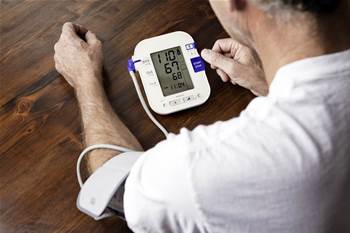eHealth NSW's chief information officer Zoran Bolevich has predicted a “fully digitally-enabled and integrated” healthcare system in the state within as little as eight years.
Speaking at Oracle's CloudWorld event in Sydney this week, Bolevic expressed a desire to make the state's "world class" health system "even better, smarter and more patient centric in the future".
“We’ve set ourselves an aim that in eight to ten years we will become a fully digitally-enabled and integrated healthcare system that places patients, carers, families at the centre, and consistently delivers great patient experiences and great patient outcomes," he said.
eHealth NSW - the state's digital arm of NSW Health - has been busy maturing the state’s core digital systems to create a consistent, interoperable IT environment in the two years since the government released its 10-year e-health strategy.
It is progressing with the rollout of its electronic medical record (eMR2), which can now be found in 90 percent - 157 out of 178 - of public hospitals across the state, as well as its electronic record for intensive care (eRIC).
Close to 50,000 clinicians are already using the EMR every day to do anything from order diagnostic tests to open electronic charts.
The agency is also stepping up the rollout of an electronic medication management (eMeds) system, having been handed $536 million in last year’s state budget to fund digital infrastructure that will support clinical systems and integrated digital patient records.
Bolevic said that having this foundation would allow the agency “to imagine some possible futures” in what is the largest public health system in Australia.
“Imagine a future where perhaps one quarter of all healthcare services are delivered online rather than face-to-face,” he said.
“Where patients have control over their personal healthcare records and can choose whether they would like to have their service provided by a video consultation or by some kind of home-based service - perhaps supported by telemetry ... or monitored by smart devices - or indeed want to go to their nearest community health centre.
“Or imagine a future where, for instance, cancer treatments are supported by genomics [the study of genes] and proteomics [the study of proteins] and by artificial intelligence protocols so that clinicians can put together the best treatments that will yield the best result for each patient based on their unique characteristics.
“That is really the future of health and where we are going with this transformation.
"Of course we are not going to get there with one leap overnight but really the foundations of that new health system architecture are being played out now.”
Bolevic concedes that achieving this kind of future-state vision will be challenging due to the complexity of large health systems, many of which are “still quite confusing and often feel a little bit fragmented to end users”.
A further complicating factor is NSW’s extensive network of rural and regional hospitals and healthcare services.
He said many existing "systems are not able to exchange patient information particularly well" - the result of how health informatics has evolved over the years.





.jpg&h=140&w=231&c=1&s=0)





















